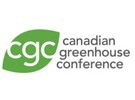Normally, lighting crops for longer than 16/17 hours has no beneficial effect. It costs a lot of extra energy, does not produce any extra yield, and, moreover, can cause leaf chlorosis – the yellowing of leaf tissue. “Plants have a biological dark/light cycle, much like humans do," says Dr. Xiuming Hao. At the Canadian Greenhouse Conference 2021, however, Dr. Hao discussed LED lighting strategies that allow for injury-free production of greenhouse tomatoes and cucumbers with 24-hour lighting.
"Long-photoperiod, low-intensity light created with LEDs shows a substantial increase in year-round production with supplemental light," he informed the audience.
In an experiment conducted in 2018-2019, tomato plants were grown with various combinations of light. As a control light plan, tomato plants were placed in red+blue light for 12 hours and then left in darkness for 12 hours. For other tomato plants, a combination of 12 hours of red light followed by 12 hours of blue light was used. The plants subjected to the latter combination showed no signs of leaf chlorosis, became taller with more leaf area in the early stage, and produced a higher early yield.
Dr. Hao continued to explain that "using dynamic 24-hour lighting during the night can reduce light fixture and daytime peak power demand by 20% without affecting the fruits." This is not true just for tomatoes: in a similar experiment done with mini-cucumbers, it was found that 24-hour lighting with either blue or red+blue light at night can reduce light fixture and daytime power demand by 15% to 33% without harming the cucumbers.
It is, of course, important to stress that the light intensities in this experiment were low; using high intensities of light for 24 hours still results in damaged crops and lower yield. Still, being able to light crops for 24 hours with low-intensity light has a great potential to reduce peak power demand and electricity costs, in addition to the benefits of reducing light fixture capital costs, light pollution and improving energy efficiency in year-round greenhouse vegetable production, and as Dr. Hao said, is definitely worth researching extensively in the future.
For more information: 
Canadian Greenhouse Conference
www.CanadianGreenhouseConference.com
